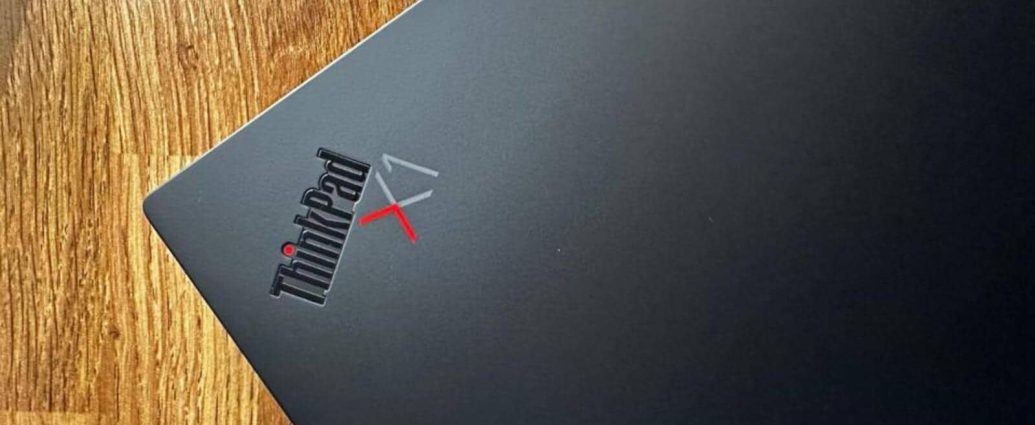The Lenovo ThinkPad X1 Carbon is an old favourite. Now, consumers have found value even in its 10th version. This started out for business users, but over time has evolved for anyone who wants an ultraportable premium laptop. Therefore, a wider competition landscape now includes the HP Spectre series, Dell XPS 13 family and in some ways, Apple MacBooks as well.
The Lenovo ThinkPad X1 Carbon Gen 10 keeps the specs very similar to the Gen 9, and the ones that came out even further back in time. No surprises to look forward to. And there isn’t new complexity to deal with. Matte black finish, generous use of robust yet lightweight carbon fiber and the no-compromise approach with the ports haven’t changed.
In fact, Lenovo points out that the keyboard design (though specific keys have evolved over time, and so has the mechanism) has not changed in the last 30 years for ThinkPad laptops. Neither has the dot on the “i” of ThinkPad on the lid, which remains illuminated in case you’ve closed the lid but not shut down the laptop. Ruggedness, which is a ThinkPad’s traditional personality definer, is better. Fine details.
What’s most certainly changed is the underlying spec sheet, which defines the performance. Important to note there that Lenovo has wrapped a feature layer over Windows 11 to include new functionality such as fast charging for the battery, limiting the battery charge to around 80% to increase longevity and the Dolby Voice ambient noise cancellation that is nothing short of brilliant with blocking out the real-world noise for video calls.
Our observations about performance emerge from the combination of an Intel Core i7-1255U processor with 16GB RAM and a 512GB solid-state drive. These are, in case you’ve not identified just yet, the Alder Lake family chips. Unless you intend to stretch the ThinkPad X1 Carbon to the fullest with something like video encoding (which is possible, but a laptop isn’t an ideal port of call for it), this laptop will not bear the weight of thermals stepping in to restrict performance at any stage.
Also Read:Lenovo Yoga Slim 7i Pro X constructs a new balance of power for slim laptops
For a typical business user, this has all the power for now, and many years to come. And ThinkPad laptops do tend to last many years. But does the generational improvement of the core specs mean better battery life too?
To be fair, it is struggling to match some rivals. We couldn’t draw anything more than 11 hours of runtime on a single charge, this when we were very careful with screen brightness and balanced sustained workloads with idle time too. This is the ballpark that the HP Spectre series also delivers. But the benchmark must be the Apple MacBook Pro, if not the Apple MacBook Air. The latest generation MBP 13 clocked almost 20 hours, under the same sort of usage, as a primary work laptop.
Lenovo alone doesn’t have to bear the responsibility. In Windows laptops, things and therefore responsibility, are more fragmented. The chip and the operating system, as well as the software you use, have their share of weightage for battery usage.
The 14-inch IPS display (this with the 1920 x 1200 resolution). It is an IPS, or in-plane switching panel. Therefore, nothing surprising about the richness of colours, the viewing angles and a panel that’s quite crisp for reading the written word. But, compared with 16:9 aspect ratio laptops, this is a square(er) 16:10 aspect ratio. To be fair, you’d be as surprised as I am when realization dawns about how much more utility this has, particularly when working on long-ish documents.
Unlike slim (and ultra-slim) laptops, Lenovo has made quite an effort to not sacrifice the connectivity options. That is also where the ThinkPad X1 Carbon definitely outdoes pretty much all of its rivals. There are a couple of Thunderbolt ports, two full-size USB 3.2 ports, an HDMI port as well as the 3.5mm headphone jack. We know what you are pointing at – Lenovo got done with the memory card reader a few generations ago, and that hasn’t changed.
I am sure the Lenovo ThinkPad X1 Carbon upholds the uncompromising family values that have held it in good stead over the years. You can always point to some trade-offs, such as a touchpad that hasn’t grown in size (perhaps it should have, considering multi-touch gestures are more common now than in 2014), no dedicated graphics or that it doesn’t look any different.
Yet, the balance still works out perfectly for an ultraportable laptop that isn’t compromising on outright performance, doesn’t give us the headache of dealing with dongles and has stayed in tune with the times, with a 16:10 display.
It would perhaps have been impossible to imagine Lenovo spending so much time on the finer points, such as the webcam, at least till a few years ago. But it has, perhaps dictated by the times and the widening of the consumer demographic.
